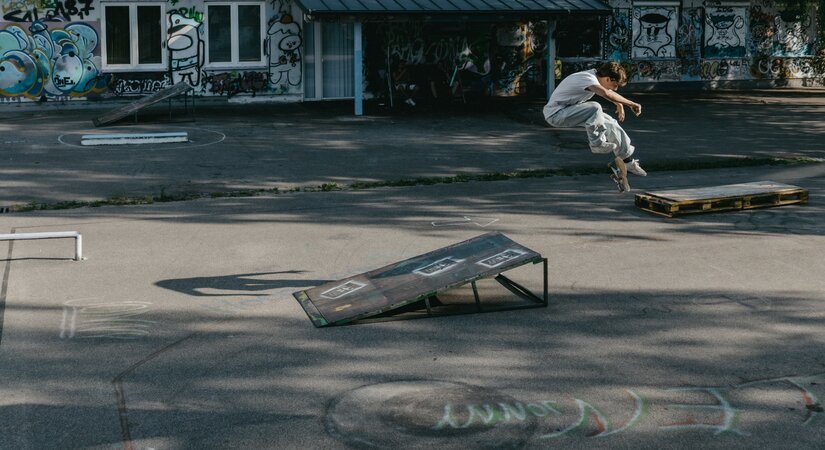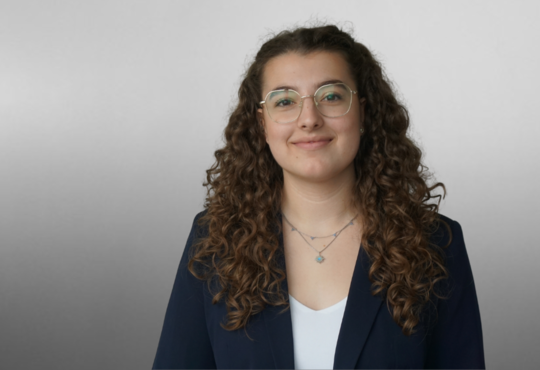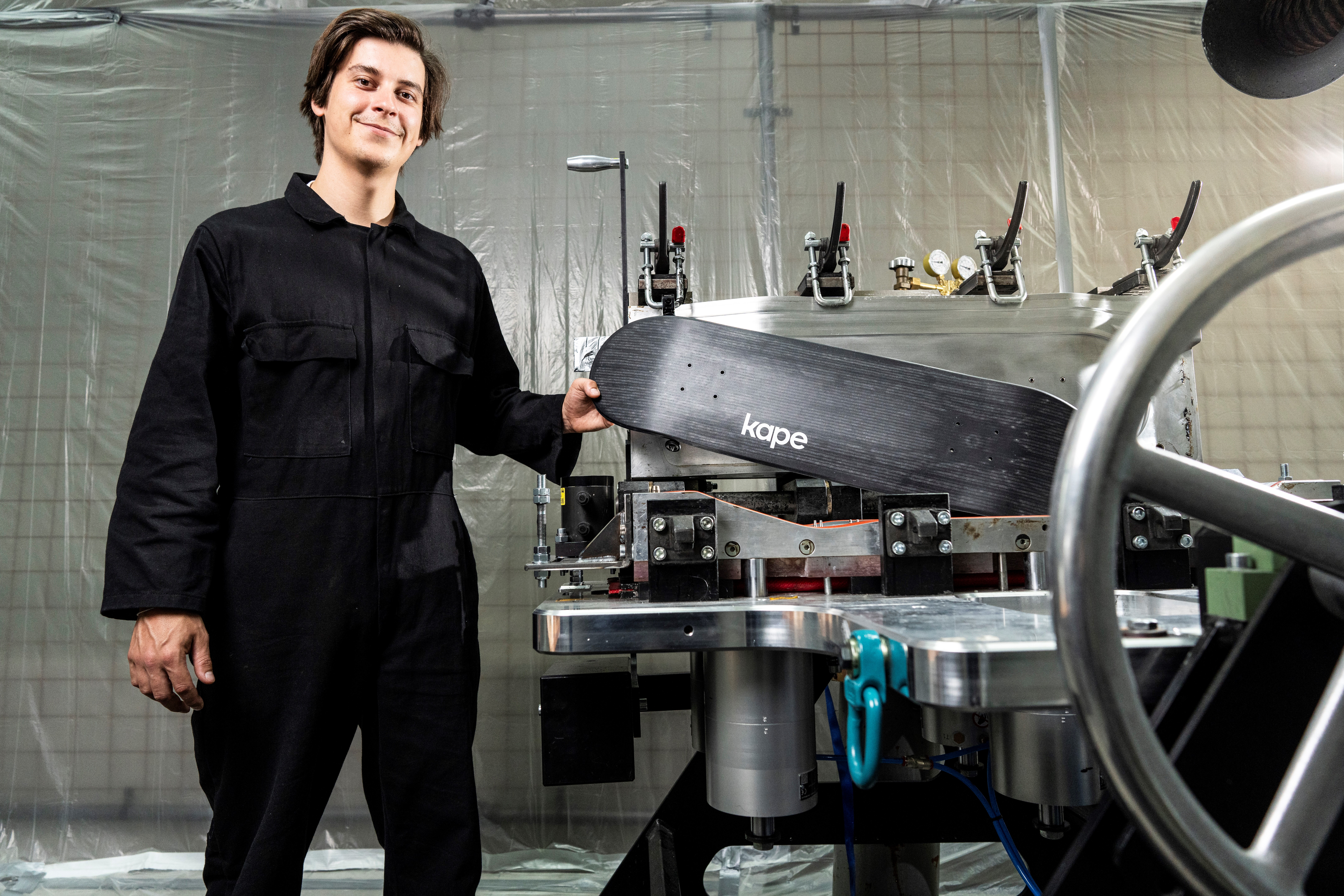The board with the super pop: Kape manufactures revolutionary skateboards with equipment from KraussMaffei

- Much more durable than laminated wooden boards
- Glass fiber sandwich composite with foam core
- In-situ polymerization with caprolactam from recycled fishing nets
(Parsdorf, 16.09.2024) Try, fall down, get up, keep going. Both as a skateboarder and an entrepreneur, you need to be daring and persevering to be successful. Peter Karacsonyi is both. After more than ten years of development, he has now created the perfect skateboard with the help of KraussMaffei. Made of glass fibers and recycled polyamide - and therefore much more sustainable than previous wooden models.
A new board every other day: professional skateboarders who ride laminated wooden skateboards have to change them extremely frequently, as the boards called "decks" splinter easily and lose their tension due to micro-cracks. It then takes more and more energy to lift off spectacularly high during tricks. The board loses its "pop", as it is called in technical jargon. For Peter Karacsonyi, an enthusiastic skater and skateboard builder since childhood, it was clear that something had to change. More pop, better performance, more sustainability and simpler production processes were his goals. After ten years of development involving trial and error, falling over, changing direction and persevering, he has now reached his goal: the "Vanguard" deck, made with production equipment from KraussMaffei, is a sophisticated composite component consisting of glass fibers and polyamide. At the end of August the first small series was launched on www.kapeskateboards.com and was sold out within five hours.
Global market worth millions
Around five to seven million skateboards are sold worldwide every year. If you want to change the way sports equipment is manufactured, you have to keep an eye on industrial mass production. Having a strong company behind you is helpful - but the revolution itself requires a small and powerful team. The specialists at the KraussMaffei site in Georgsmarienhütte/Harderberg especially design engineer Florian Jovanovic and plant manager René Ring - were exactly the right people. Peter Karacsonyi praises:
The mold carrier that was created together is extremely flexible with many adjustment options - and yet as simple and inexpensive as it needs to be when someone is at the start of their project. The collaboration with KraussMaffei was actually the successful final spurt.
Peter Karacsonyi had been tinkering since 2014. Initially with a pressed multilayer system made from wood veneers and carbon fibers. He was able to convince two investors with the idea on the TV show "Höhle der Löwen" and sold several thousand boards. A world record was even set with this board. (Here is the link: https://www.youtube.com/watch?v=iGV6ZNn2y_k )
However, this was not enough for Peter Karacsonyi. Because when the technology could no longer be improved, he came up with the idea of casting skateboards instead of pressing them, using Organosheets made of glass fibers and adding a ribbed structure by injection molding. It was already clear at this point that the plastic used should be a thermoplastic, because the recycling possibilities are much better. The concept was developed and patented, but ultimately not implemented because the cycle times would have been too long due to the high wall thickness and the complexity of the process.
In-situ polymerization as a solution
So, he rethought again! Having studied sports equipment technology, Peter Karacsonyi is familiar with manufacturing processes - and he is a very thorough person. That's why he next turned his attention to in-situ polymerization. In this process, the plastic is not processed in granulate form, but its basic materials only react with each other in the mold itself. For the polyamide, this is caprolactam plus activator and catalyst. Caprolactam is as liquid as water. The process therefore promised particularly good penetration of the glass fibers. In contrast to injection molding, it would also make it possible to produce a sandwich composite in a one-shot process. A foam body developed in-house (also made of polyamide) was to serve as a lightweight core material. After a manual test had shown that his concept worked, Peter Karacsonyi set out in search of industrial partners to manufacture the deck - which ended in frustration. Suppliers in Austria and Hungary did not deliver the desired quality and the collaboration proved to be less than cooperative.
Everything on one card with in-house production
If you want to do a handstand on the high edge of a halfpipe, you have to put all your eggs in one basket. Peter Karacsonyi therefore also went "all-in" and decided to take the production of the Vanguard into his own hands. This meant looking for a suitable production system consisting of a mold carrier, mold, dosing machine and automation. In order to be able to realize his vision financially, he acquired research funding and brought investors on board. Since 2019, the focus has been exclusively on the composite deck; production of the previous boards has been discontinued.
The chemistry with the KraussMaffei team in Georgsmarienhütte/Harderberg was right from the outset, enabling them to overcome challenges together. In addition to the mechanical flexibility - for process-specific reasons, the mold carrier had to be as flexible as possible - it was above all the unusually high mold temperature that caused headaches. Normally 40 to 60 degrees Celsius prevail here, but 140 to 160 degrees were needed for the skateboard. Many standard components such as cylinders and valves could therefore not be used and had to be replaced with alternatives. In order to keep energy consumption as low as possible and not heat up the entire metal construction, the mold and mold carrier were thermally separated from each other using insulating plates. By using an air cushion, the upper and lower parts can be forcefully sealed together. "The whole thing grew almost organically," recalls design engineer Florian Jovanovic of the insights gained during development. The result is a reliable series production process with an optimally coordinated system.
Sandwich made of glass fibers and foam core
For each board, the Kape employee now takes a sandwich made of unidirectional continuous glass fibers and an intermediate foam core and inserts it into the mould. The mold carrier closes, the vacuum is applied and the polyamide components are added. Incidentally, Peter Karacsonyi did not take the easy way out with the Caprolactam either. In order to make his board even more sustainable - in addition to extending its service life - he found a supplier for the monomer in Italy that extracts it from fishing nets and industrial waste using chemical recycling. "Working with Peter on this project was great! Producing the skateboard with ECONYL® Caprolactam was a real challenge, yet unique experience. And what made it even better was the fact, that we shared the same sustainable values with the team - that made the difference." says Giulio Bonazzi - Chairman and CEO of Aquafil SpA.
After around six minutes, the tool opens and the 80 x 21 centimeter Vanguard can be removed. The only rework required is the removal of a wafer-thin polyamide edge and the 0.7 millimeter thick sprue, which is simply done with a knife. The visible structure of the deck characterizes the look, only clear varnish and a screen print are applied.
The buyer of the Vanguard only has to screw on their trucks and wheels then they’re ready to go. Without splintering or breaking - but with pop that lasts and the feel and sound of wood. This is also confirmed by previous test riders, including several Olympic athletes and Kape team rider Levi Löffelberger. Since the 1970s, the production of skateboards had remained more or less the same. The innovative composite technology from Peter Karacsonyi / Kape with equipment from KraussMaffei is now changing that.
Visitors to Fakuma can experience the Vanguard live at the KraussMaffei stand (October 15 - 19, Hall A7, Stand 7303).
Contact Person




